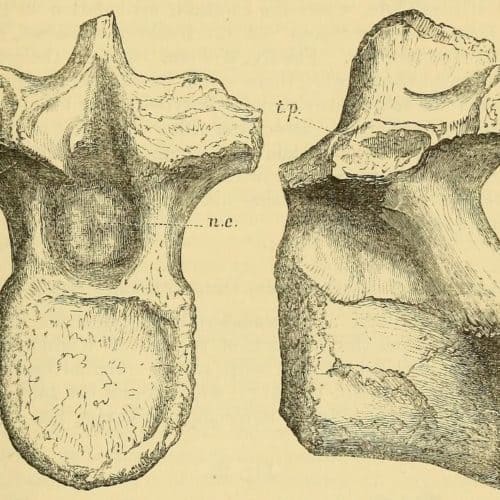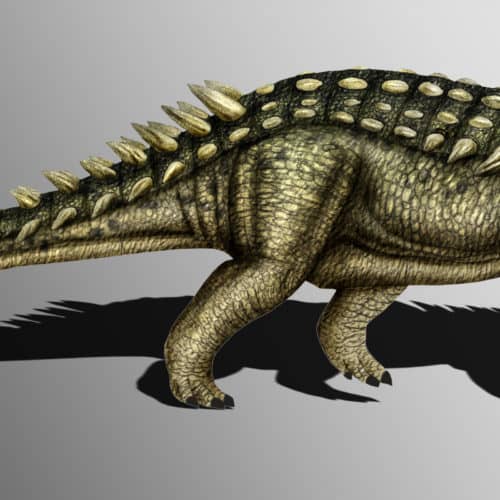Acanthopholis Horridus Huxley is Folkestone’s very own dinosaur!
Around 1865, fossil collector John Griffiths found some fossil dinosaur teeth on the beach at East Wear Bay.
Thomas Henry Huxley was a Victorian palaeontologist: someone who studies plants and animals that lived millions of years ago. He found out about what Griffiths had found and paid him to keep digging, hoping that we would discover more remains, which he did!
He found several more bones and some fragments of body armour. (The armour that was part of the animal itself. For example, tortoises have body armour. )
They had found a new species. Huxley named it Acanthopholis horridus Huxley. That is Latin for Huxley’s rough (or frightening) spiny scales - a reference to its impressive armour.
The body armour consisted of oval-shaped body plates, with long spikes sticking out from the neck, shoulders and along the spine.
Acanthopholis walked on four legs and was a plant-eater.
It was between 3 and 5.5 metres long and weighed about 380 kilograms.
In the bottom left hand corner of the picture it is shown next to an adult human to give an idea of its size. However, like all dinosaurs Acanthopholis became extinct millions of years before the first people walked the earth.
It lived in the Cretaceous period about 100 million years ago.
You can view Folkestone’s Acanthopholis dinosaur fossils in stunning 3D:
http://www.3d-fossils.ac.uk/fossilType.cfm?typSampleId=605744
Image courtesy of Wikimedia Commons (free for non-commercial use)
Thomas Henry Huxley studied fossil reptiles and wrote papers on Archaeopteryx and the origins of birds.
But he is best remembered as ‘Darwin's Bulldog’ because of the way he supported Charles Darwin's theory of evolution.



